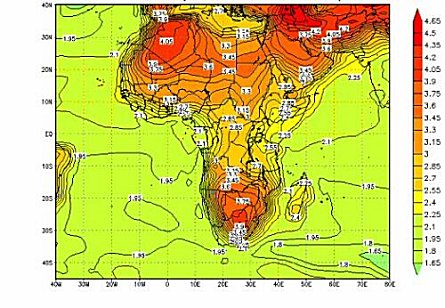Methodology
- Development of adaptation benefit-cost framework: The framework was developed in a manner to make it possible to isolate development- and climate-related benefits and costs of individual projects and to assess the sensitivity of adaptation benefits and costs to the uncertainty inherent in regional climate change scenarios.
- Development of analytical tools and procedures: The project developed general procedures and specific analytical tools for consistently measuring the costs and benefits of adaptation projects in the agriculture sector in Africa. These procedures and tools allow multi- and by-lateral development institutions to evaluate the benefits and costs specifically related to climate adaptation “add-ons” to sustainable development projects.
- Application of analytical tools and procedures: The project applied these procedures and analytical tools to estimate the benefits and costs of a well-defined adaptation project in the agricultural sector, particularly on the predominant crop in The Gambia: millet.
- Water-crop model:
A detailed water-crop model has been setup and applied for a reference period and for future projected climates. Adaptation strategies have been defined and explored with the model developed and an economic analysis have been applied on the results.
Overview of The Gambia. Landsat composite from 1990.
The major steps taken were:
- collection of base data and information
- extraction of IPCC projections for The Gambia
- downscaling of these projections to the local conditions for The Gambia
- setup of a crop-water model
- evaluation of the impact of climate change on yields
- definition of adaptation strategies
- evaluation of the impact of these adaptation strategies
- evaluation of the economics of these adaptation strategies
Result and conclusions
For the development and application of the adaptation benefit-cost framework data from two GCMs were used while concentrating on the most common grain crop in The Gambia: millet. The most relevant adaptation strategies were selected: crop variety improvements, fertilizer applications and irrigation. However, the modeling framework as it is setup can be easily applied to other GCMs, SRES scenarios, crops, soils, or adaptation strategies.
From the analysis it is clear that the impact of climate change on millet yields depends highly on the GCM selected. The HADCM3 projections indicate a much drier future, while the ECHAM4 ones indicate somewhat more rainfall in the future. Considering the “no-regret” principle, we decided to explore the adaptation strategies for the HADCM3 projections only.

Emphasize was put on the annual variation, and more specifically on the successive years of low yields. Introduction of irrigation appears to be the most successful adaptation strategy, yields will increase and, moreover, year-to-year variation decreases substantially.

A rough estimate of the benefits in terms of gross return was carried out by multiplying the yield by the price of millet (about $ 0.15 kg-1). For the irrigation adaptation strategy this means that the gross return per hectare will increase from $170 to $235. As mentioned before, the reduction in year-to-year variation by the adaptation strategies will be even more important and should be analyzed in detail.
Finally, the most promising adaptations has to be implemented and successive studies should look into whether these adaptation strategies can be adopted through market forces, whether the government should impose these by subsidizes or tax regulations, or whether bi-lateral aid should focus on this in an effort to minimize risks of food shortages.



